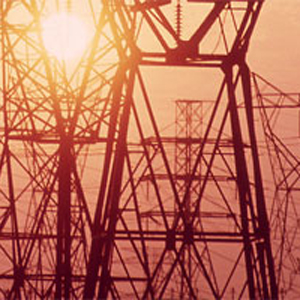 California may not have met its goal of 20% renewable energy by 2010, but outgoing California Energy commissioner Jeffrey Byron says the state is close, and that California is on track to meet its its goal of 33% renewable energy by 2020.
California may not have met its goal of 20% renewable energy by 2010, but outgoing California Energy commissioner Jeffrey Byron says the state is close, and that California is on track to meet its its goal of 33% renewable energy by 2020.
“We didn’t get to the point where we’re generating 20% of our electricity by renewables, but I believe we do have, or we’re very close to having, all the contracts in place,” he said Thursday.
Byron was at Stanford University on Thursday, speaking at a workshop titled, “Grid Integration of Renewables.”
According to Byron, the reasons for the unmet goal include the California Energy Commission not getting all the power plant siting cases through in a timely fashion, the slow pace of utility companies to enter into contracts, and the failure of some companies to complete their renewables projects.
However, he said, the groundwork is being laid for success in the future.
“We do have sufficient transmission plans and projects underway to meet 33% by 2020.”
Byron was joined at Stanford Thursday by an international cast of renewables experts, including New Mexico’s Senator Jeff Bingaman, the Chairman of the Senate Energy and Natural Resources Committee.
Bingaman outlined the biggest challenges facing the growth of renewable energy at a national level.
“There’s three things to keep in mind about the current Washington environment, and none of it is good news,” he said.
With the 2012 election already looming in the Capitol, Bingaman said, it will be unlikely to get a bipartisan agreement to “do what we need to do.” Additional barriers, he said, are a “strong ideological resistance” to an active role of government in transitioning the energy economy and a a dire federal budget situtation.
Bingaman said that 2/3 of federal support to the energy economy is through the tax code, but for renewables, the number is closer to 80%. However, the incentives for solar and wind are relatively short-term, he said, with the wind credit set to expire in 2012 and the solar one in 2016.
“These incentives are not as effective as they could be if they were permanent or long-term,” said Bingaman.
Stanford engineering professor Mark Jacobson presented his research finding that the world already has most of the technology it needs to move to a 100% clean energy economy by 2030. Not only could it be done, he said, but doing so could save 3.5 million air pollution deaths per year.
But, as President Obama said in November about cap-and-trade, “There’s more than one way to skin a cat.” And many argue that one of the ways to skin this cat — reducing California’s emissions — is good old-fashioned energy efficiency.
KQED’s Amy Standen explores one voluntary program in California that helps homeowners save energy and money. Funded by untility companies such as PG&E and federal stimulus dollars, Energy Upgrade California aims to make more than 50,000 homes across the state more energy efficient.
(Amy’s radio piece first aired on Monday on KQED’s Quest, and it will be rebroadcast today on The California Report.)
For more about California’s efforts to reach 33% renewables by 2020, check out our series “33×20: California’s Clean Power Countdown,” produced in collaboration with Quest.
3 thoughts on “Its First Renewables Goal Unmet, Can CA Meet The Next One?”
Comments are closed.

LADWP achieved a 20% RPS – Investor Owned Utilities did not!
Hi Jonathan,
Thanks for your comment. Rather than cutting and pasting an entire press release in this space, please feel free to provide the link, and any analysis you would like to add.
Thanks,
Gretchen
I think its really interesting how LADWP was able to reach the goal while the rest of the state could not. Looks like its all about actually committing to it early.